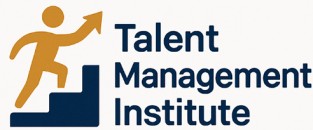
Understanding the Basics of Workforce Forecasting
Decoding Workforce Forecasting Fundamentals
For businesses aiming to stay ahead in the competitive landscape, understanding the core principles of workforce forecasting is a critical first step. Essentially, it revolves around predicting future human resource needs to meet business goals efficiently. As a subset of resource forecasting, it plays a pivotal role in optimizing employee and resource management strategies.
Successful workforce forecasting involves several dynamic components:
- Trend Analysis: Examining historical data provides insights into future hiring needs and helps in identifying patterns that may affect human resource demand.
- Predictive Analytics: Utilizing data-driven techniques, businesses can forecast demand more accurately and proactively adjust their staffing approaches.
- Scenario Planning: Considering various business scenarios enables organizations to prepare for fluctuations in their staffing requirements.
Integrating these fundamentals, organizations can engage in informed talent acquisition and employee planning processes, aligning them with overarching company objectives. To learn more about the vital role human resources play in this process, check out our featured piece that highlights HR’s significant contributions to talent management.
Key Factors Influencing Workforce Forecasting
Identifying Influential Elements in Workforce Forecasting
In the realm of workforce forecasting, understanding the key factors that influence the process is crucial for any business aiming to align its human resources with future demands. These elements are the building blocks that determine the accuracy and effectiveness of your forecasting efforts.
Business Goals and Strategic Alignment
One of the primary factors influencing workforce forecasting is the alignment with business goals. A company must have a clear understanding of its strategic objectives to ensure that its workforce planning supports these aims. This involves analyzing how current workforce capabilities can meet future business needs and identifying gaps that may require new talent acquisition or employee development.
Data-Driven Insights and Predictive Analytics
Data is at the heart of effective workforce forecasting. Utilizing predictive analytics allows businesses to anticipate future staffing needs based on historical data and trend analysis. By examining past patterns and current workforce metrics, companies can make informed decisions about future resource requirements. This data-driven approach helps in minimizing risks and optimizing talent management strategies.
Understanding Workforce Demand and Supply
Another critical factor is the analysis of workforce demand and supply. Demand forecasting involves predicting the number of employees needed to meet future business operations, while supply forecasting assesses the availability of internal and external talent. This dual analysis helps in balancing the workforce to avoid overstaffing or understaffing, which can impact productivity and business performance.
Scenario Planning and Flexibility
Scenario planning is a valuable tool in workforce forecasting, allowing businesses to prepare for various future possibilities. By considering different scenarios, companies can develop flexible strategies that adapt to changes in market conditions, economic shifts, or technological advancements. This proactive approach ensures that the workforce remains agile and responsive to unforeseen challenges.
Employee Engagement and Retention
Finally, the level of employee engagement and retention plays a significant role in workforce forecasting. High turnover rates can disrupt workforce planning and lead to increased recruitment costs. Therefore, understanding the factors that influence employee satisfaction and implementing strategies to enhance engagement are essential for maintaining a stable and committed workforce.
Tools and Techniques for Accurate Forecasting
Effective Tools and Techniques for Workforce Needs Analysis
In the journey of anticipating future workforce demands, leveraging the right tools and techniques is crucial. With various forecasting methods available, businesses can derive accurate projections that align with their human resource needs and overall business goals. Here, we break down some of the most effective methods and approaches used today.
To initiate the forecasting process, it is essential to gather and analyze historical data. By examining trends and patterns from past employment records, companies can identify recurring cycles and anticipate future demand. This trend analysis forms the backbone of data-driven workforce planning.
Utilizing Predictive Analytics
Predictive analytics stands out as a powerful technique in workforce forecasting. By harnessing vast amounts of data, businesses can predict potential staffing needs and preemptively address resource shortages. This technique leverages advanced algorithms and machine learning to project potential scenarios, enabling companies to make informed decisions about talent acquisition and management.
Scenario Planning
Scenario planning is a versatile method that allows organizations to explore various future possibilities and their implications on workforce needs. By creating multiple "what-if" scenarios, companies can assess the impact of different external factors—such as economic changes or technological advancements—on their workforce. This prepares them to adapt quickly and efficiently, maintaining alignment with business objectives.
Frequent Analysis and Employee Feedback
An often overlooked yet vital aspect of resource forecasting involves continuous analysis and feedback. Regularly reviewing workforce data in conjunction with employee feedback can reveal emerging trends and potential challenges. By maintaining an open channel of communication with employees, companies can gain valuable insights into job satisfaction and potential areas for improvement, aligning workforce planning with evolving employee needs.
Challenges in Workforce Forecasting
Navigating the Challenges of Workforce Forecasting
Workforce forecasting is an indispensable part of effective talent management. Yet, it doesn't come without its fair share of challenges. Addressing these obstacles is crucial in aligning workforce planning with business goals and achieving desired outcomes.- Data Limitations: Relying on historical data for predictive analytics can be problematic. While past trends offer insights, they aren't always indicative of future scenarios. A comprehensive analysis of current workforce and market changes is needed to develop accurate forecasts.
- Uncertainty in Demand: Demand forecasting is inherently uncertain due to fluctuating business environments. Companies often struggle to predict employee needs accurately due to rapid market shifts, technological advancements, and changes in business strategies.
- Integration Issues: Aligning workforce planning with broader talent management strategies requires seamless integration. Disparate data sources and misaligned processes can lead to inefficiencies in forecasting, hindering effective resource allocation.
- Complex Staffing Needs: A one-size-fits-all approach does not work for workforce forecasting. Companies often face challenges in identifying specific staffing requirements based on unique business and department needs, making it crucial to employ tailored forecasting methods.
- Employee Retention Concerns: Retaining top talent is a critical aspect of workforce planning. Predicting employee turnover and its impacts on future staffing can be a daunting task, requiring continuous monitoring and adaptation of talent acquisition strategies.
Integrating Workforce Forecasting with Talent Management Strategies
Aligning Forecasting with Talent Management Strategies
Integrating workforce forecasting with talent management strategies is crucial for achieving your company's business goals. Forecasting is not merely a predictive tool; it serves as a strategic component within the broader talent management framework. Here’s how companies can seamlessly align their workforce forecasting efforts with their talent management strategies:- Data-Driven Insight: Utilize historical data and predictive analytics to inform forecasting. Harnessing such data-driven insights can reveal trends that guide future planning, helping anticipate changes in workforce demand and supply. This means analyzing your current workforce capabilities and gaps against your future business needs.
- Scenario Planning: Employ scenario planning to prepare for different possible futures. This approach allows businesses to be flexible and adaptive, ensuring they have the right talent in place to meet demands. Scenario planning, coupled with forecasting, enables effective staffing decisions by evaluating best-case and worst-case staffing scenarios.
- Dynamic Employee Roles: As companies forecast their workforce needs, they should consider how roles might evolve over time. This means re-evaluating existing job descriptions and considering employee development and upskilling to meet future needs. Talent acquisition should focus not just on current roles but also on roles that evolve as part of future strategic plans.
- Regular Review and Adjustment: Strategies should be under continuous assessment. Just as workforce dynamics and business landscapes change, forecasts and associated strategies should be flexible to adapt in the same vein. This periodic revision ensures alignment between human resource capabilities and company goals.













